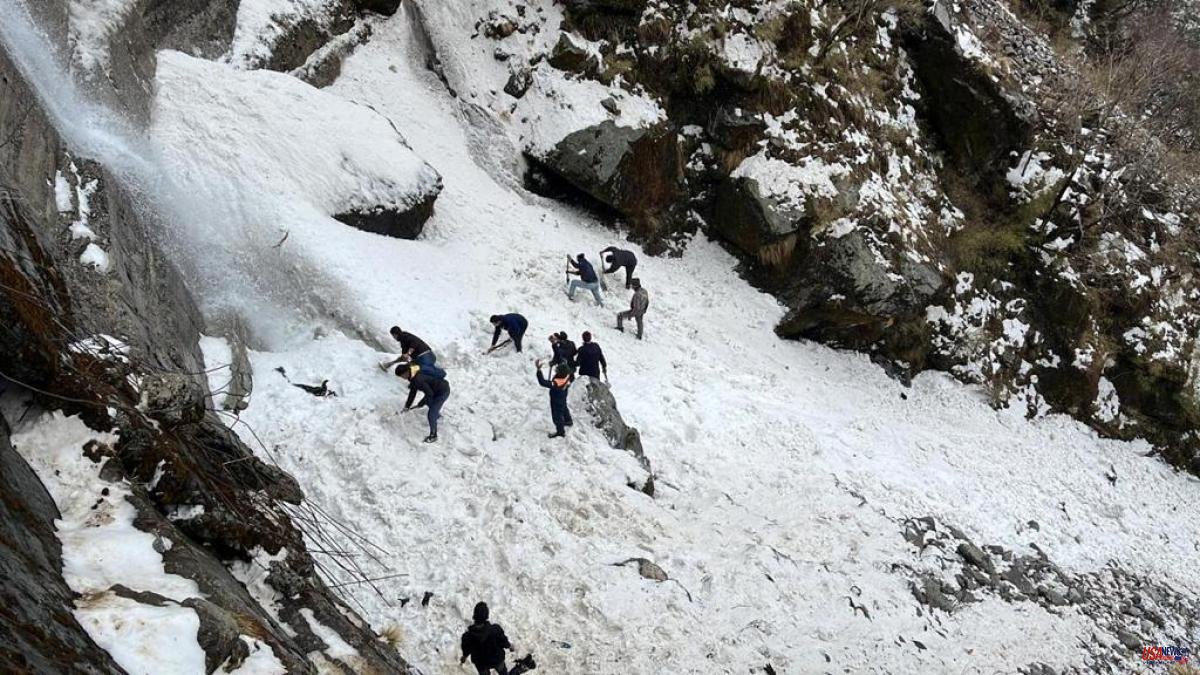A gigantic avalanche of snow in the Indian Himalayas has caused the death of at least seven tourists on Tuesday and has left more than a hundred trapped. The tragedy has occurred in the mountain pass of Nathu La, in the small state of Sikkim. Eleven injured have been taken to hospitals in the state capital, Gangtok, while rescue efforts continue. Police have reported that among the confirmed deaths there are four men, a woman and a child.
According to All India Radio, twenty-two tourists have been rescued, including a woman who had spent an hour and a half buried under the snow. The avalanche has indirectly affected more than eighty vehicles and 350 people on the road that connects the border with Gangtok, which has already been opened.
It is assumed that most of the tourists are Indian, although no nationality data is yet available. The Spanish embassy is not aware, at the moment, that Spanish tourists have been affected.
Nathu La is on the border with China and receives many tourists for its scenic beauty, which includes the mythical summit of Kanchenjanga. The former kingdom of Sikkim was annexed by India in 1975 after a disputed referendum and is the least populous state in the country, with a predominance of people of Nepali origin, which is also the state's official language.
The tragedy coincides with the official visit to New Delhi of the last of the kings of the Himalayas -after the conversion of Nepal into a Republic more than a decade ago- Jigme Khesar Namgyel Wangchuck of Bhutan.
The Himalayas, which separate rather than unite the two Asian giants, India and China, are once again in the spotlight due to the recurring skirmishes between the two armies in recent years, in the absence of a mutually recognized border. Although China has agreed to fix its border with all its neighbors over the past decades, it has failed to do so with India and Bhutan, whose international relations depend on New Delhi.
As an example of this dispute, just yesterday China published the official name of eleven place names, in Chinese and Tibetan, of the territory under Indian rule that New Delhi has called Arunachal Pradesh for fifty years and that China insists is South Tibet. It is the third series of "official" place names launched by Beijing since 2017, when the Dalai Lama visited the Himalayan state, which contains the famous Tibetan monastery of Tawang.
(news in enlargement)













